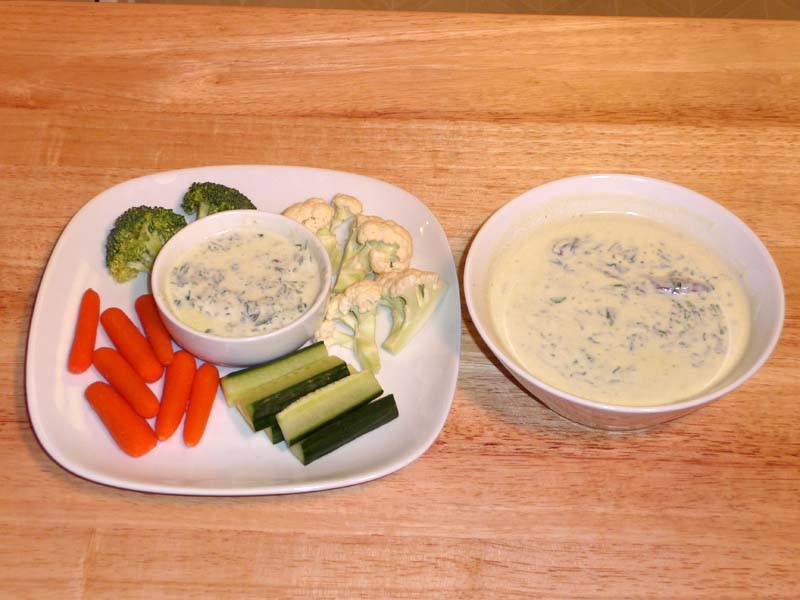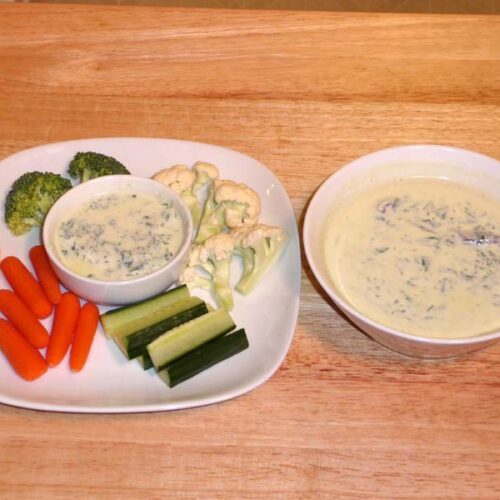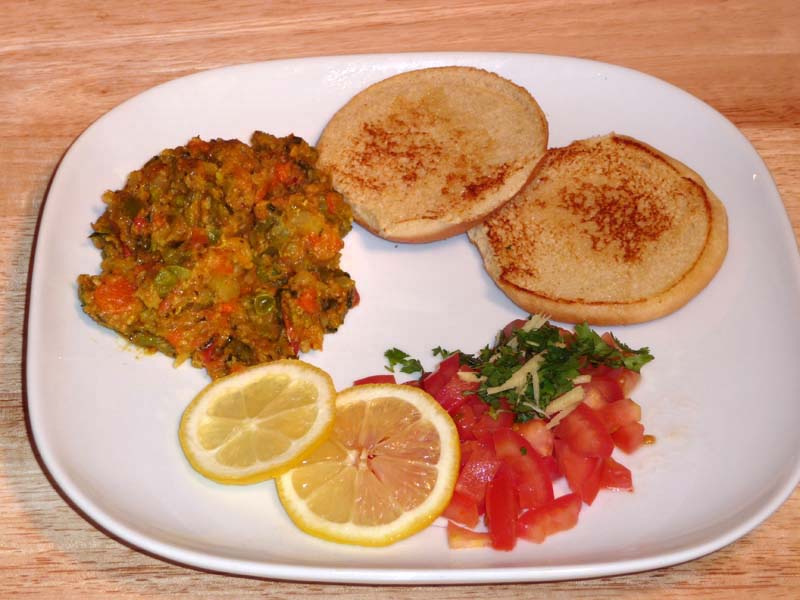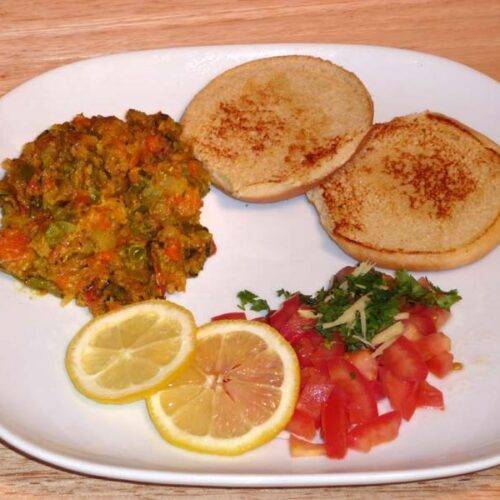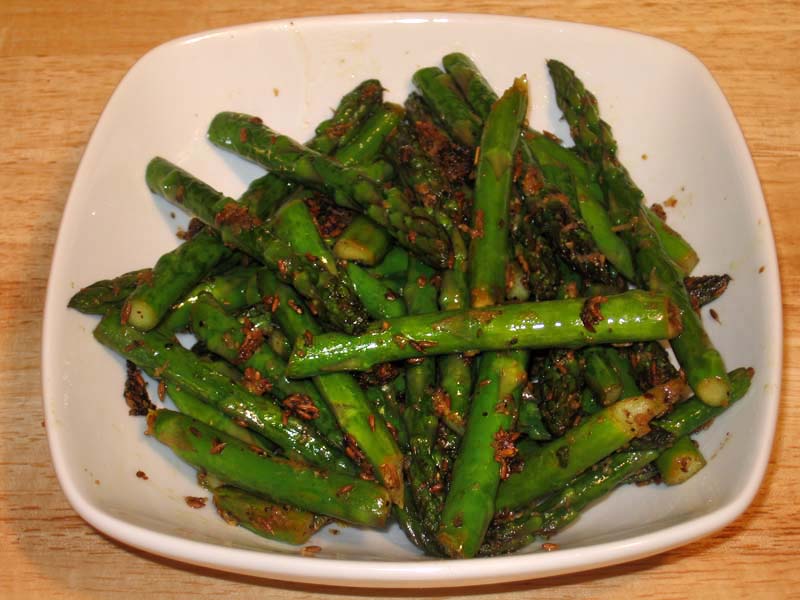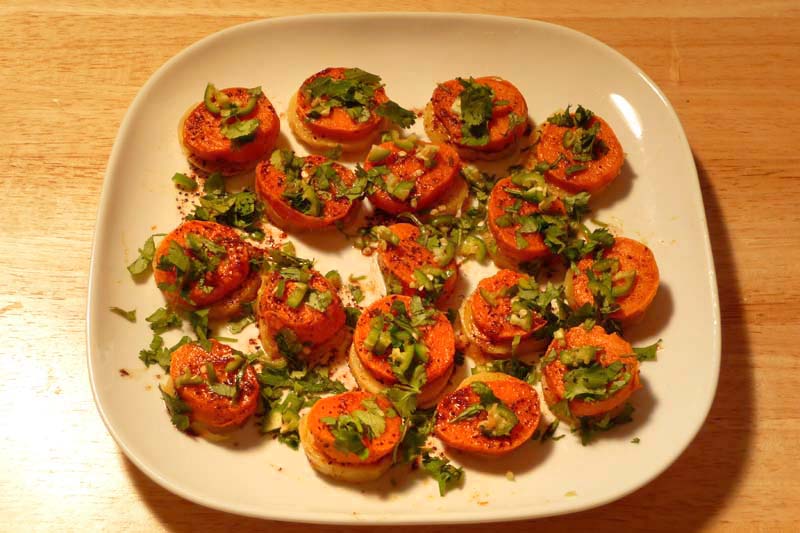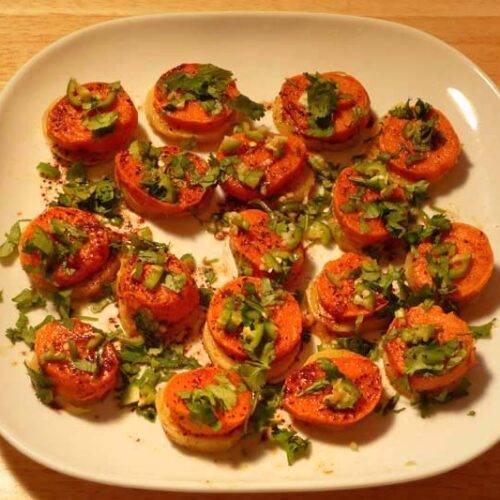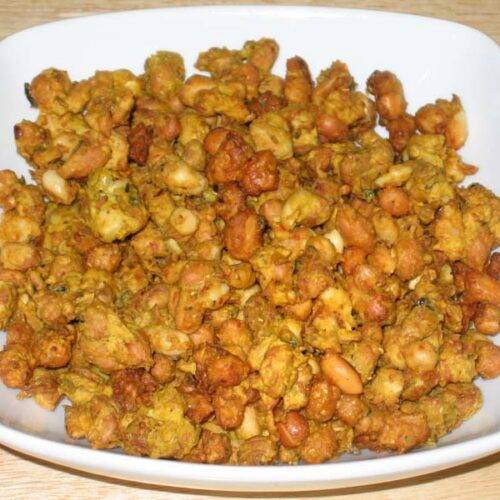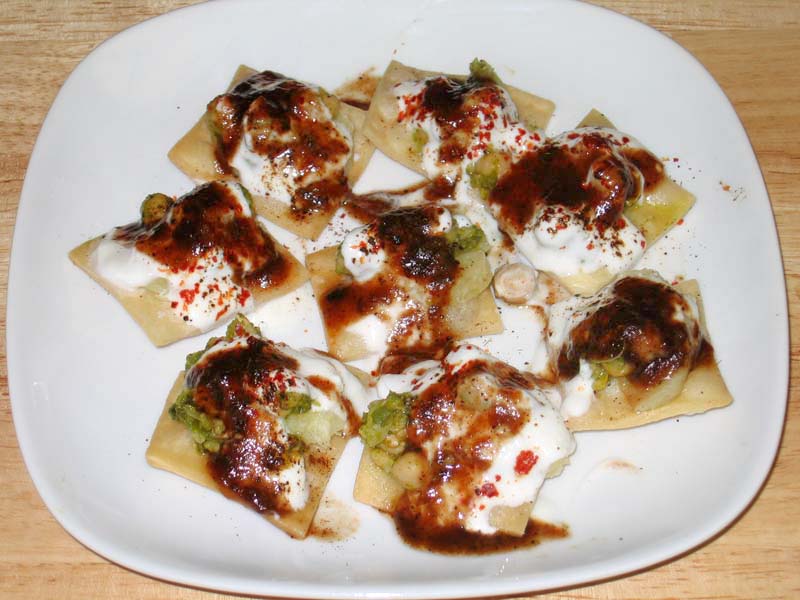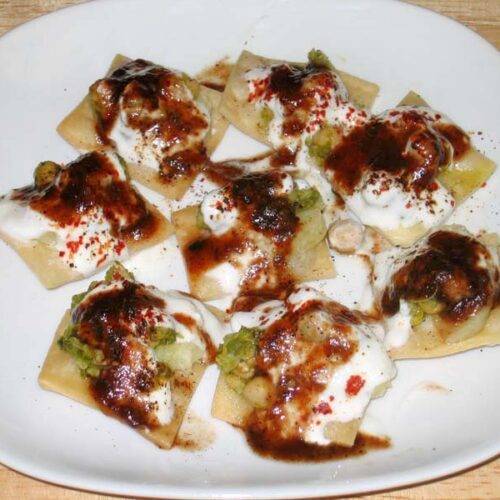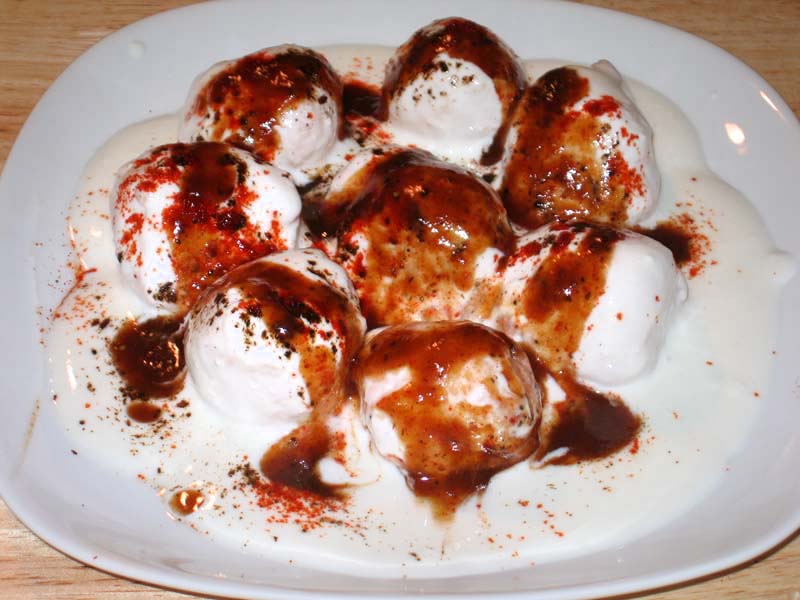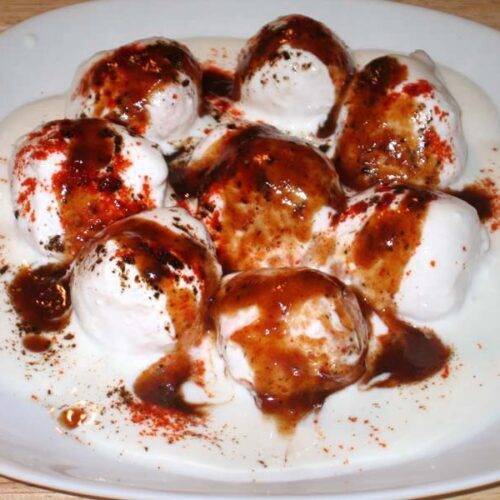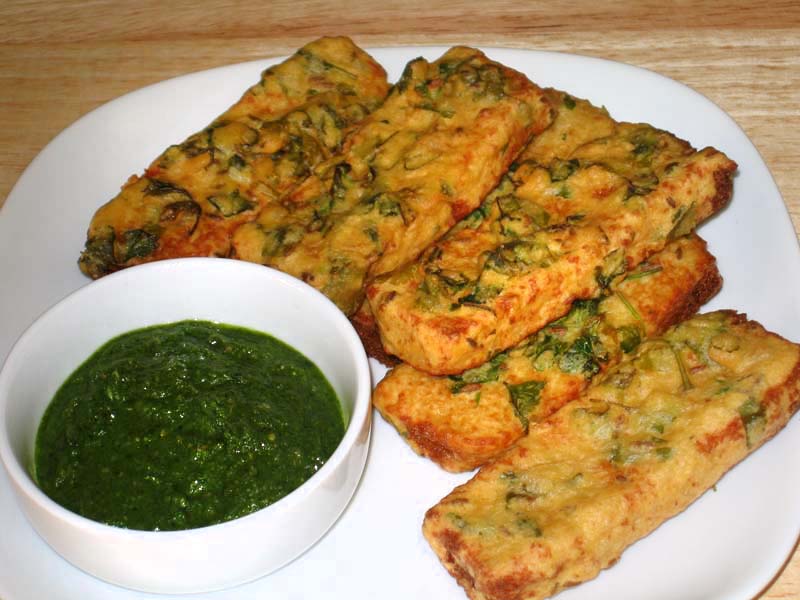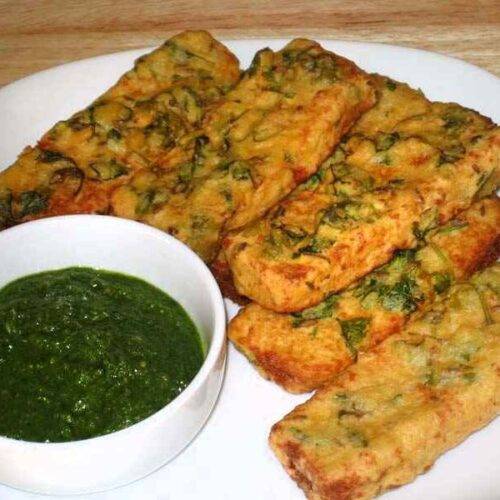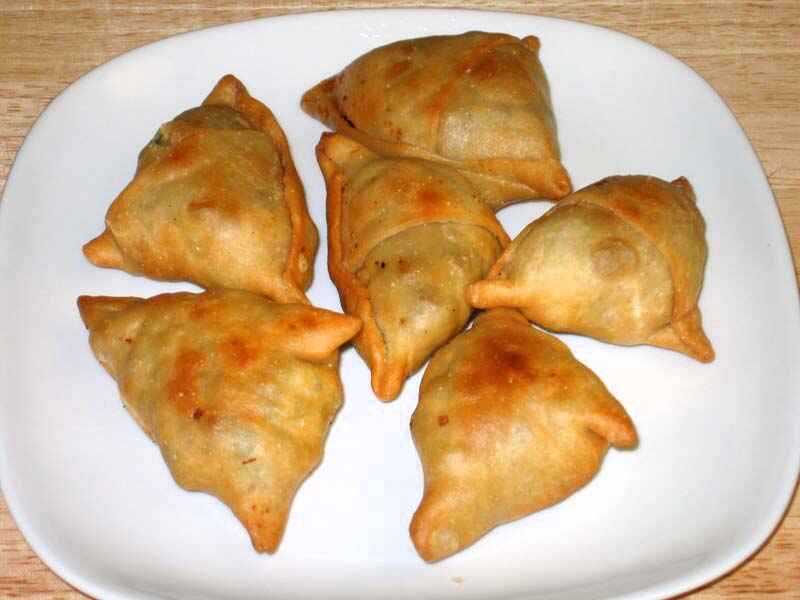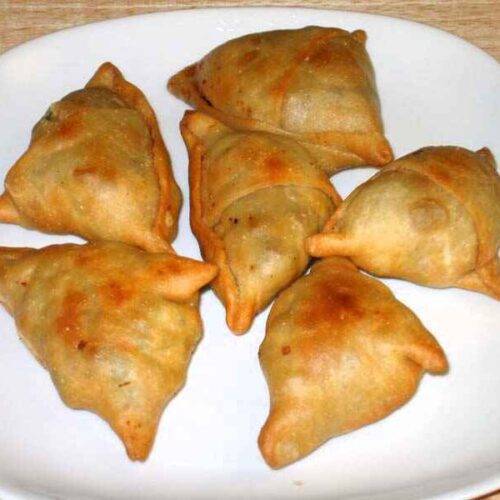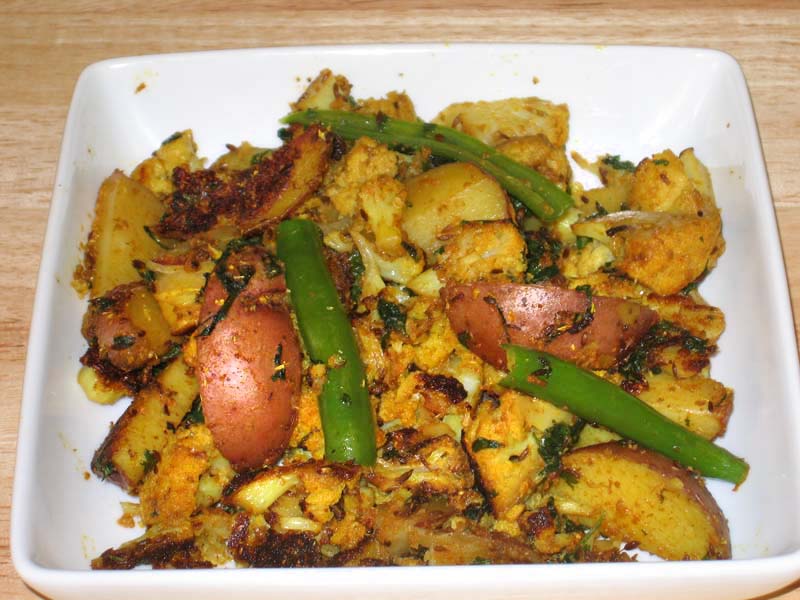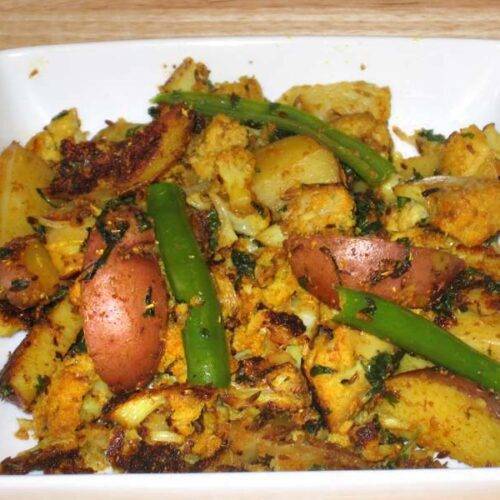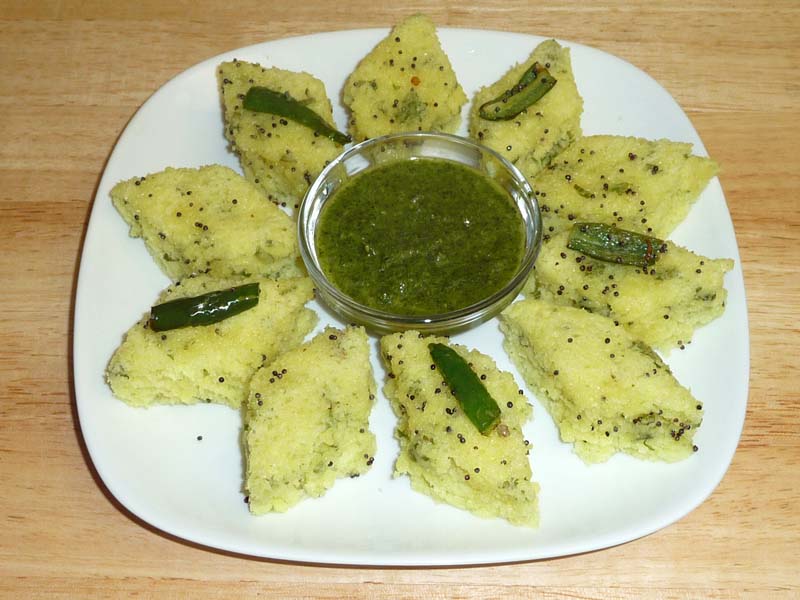Spinach Raita
Ingredients
Ingredients:
- 2 cups chopped spinach, stems removed
- 1 teaspoon oil
- 1/2 teaspoon cumin seeds (jeera)
- Pinch of asafetida (hing)
- 2 whole red chili
- 1/2 teaspoon black pepper
- 1/2 teaspoon salt (adjust to taste)
- 1 1/2 cup yogurt
Instructions
Method:
- Heat the oil in a saucepan on medium high heat. Test the heat by adding one cumin seed to the oil; if seed cracks right away, oil is ready.
- Add the asafetida and cumin seeds. After the cumin seeds crack, add red chilies stir-fry for few seconds.
- Add spinach, salt, and black pepper and stir-fry, pressing the spinach down to allow most of the water to evaporate but still leaving the spinach moist.
- After the spinach cools off, mix it well into the yogurt.
- Add milk to the raita about half a cup adjust to the desire consistency.
- For best result serve chill.
Notes
- Spinach raita also can be served as a spread with bread or crackers keep the consistency thick do not need to add any milk.
- To serve as a dip add about ¼ cup of milk but keep thicker then raita.
Serve over plain rice or as a side dish with any meal.
How to Make Palak Raita – Manjula’s Kitchen
What is Raita: Raita is an accompaniment for any Indian meal and can be created in the form of Vegetable Raita, Spinach Raita, Boondi ka Raita, Cucumber Raita & Lauki ka Raita. Here we are focussing on making palak ka raita or spinach raita, it’s a simple quick & easy, gluten free, kid friendly and nutritious yogurt-based recipe featuring palak or spinach and a selection of Indian spice powders.
1. Heating Oil and Infusing Flavours: Initiating Palak Raita Preparation
Begin the palatable journey of creating Palak Raita by heating oil in a saucepan over medium-high heat. A simple test, featuring the crackling of a cumin seed, confirms the readiness of the oil for the culinary symphony about to unfold. With the aromatic base established, infuse the oil with the distinctive essence of asafetida and cumin seeds. As the cumin seeds crackle, introduce red chilies, stirring the mix for a tantalizing burst of flavour that sets the stage for the vibrant palak raita.
-
Sautéing Spinach with Seasonings: Crafting the Palak Raita Base
Add the star ingredient, spinach, to the fragrant mix, along with a dash of salt and black pepper. Engage in a thorough stir-fry, applying gentle pressure to the spinach, coaxing it to release its moisture. The objective is to strike a balance, allowing most of the water to evaporate while retaining the spinach’s inherent moisture. This meticulous step forms the foundation of the palak raita, infusing it with the earthy essence of spinach.
-
Blending Spinach with Yogurt and Milk: Achieving Palak Raita Consistency
Once the sautéed spinach cools off, seamlessly integrate it into the waiting yogurt. This integration creates a symphony of textures and flavours, transforming the yogurt into the creamy canvas for the palak raita. To achieve the desired consistency, introduce milk gradually, adjusting until reaching the perfect balance. This harmonious blend of yogurt and milk ensures a palak raita that is not only flavorful but also luxuriously creamy.
-
Chilling for Optimal Enjoyment: Perfecting the Palak Raita Experience
For optimal results, serve the palak raita chilled. This step enhances the overall sensory experience, allowing the flavours to meld and intensify. The coolness complements the earthy spinach and the tanginess of the yogurt, resulting in a refreshing and delightful palak raita that is sure to tantalize the taste buds.
-
Tips and Variations: Enhancing the Palak Raita Recipe
Consider using frozen chopped spinach as a convenient alternative to fresh spinach. Additionally, palak raita transforms into a versatile spread when served with bread or crackers, maintaining a thick consistency without the need for additional milk. For a dip, add approximately ¼ cup of milk, ensuring a thicker texture than traditional raita. These variations allow palak raita to shine in diverse culinary roles, catering to a spectrum of taste preferences.
-
Serving Suggestions: Palak Raita as a Versatile Accompaniment
Experience the versatility of Palak Raita by serving it over plain rice or as a side dish accompanying any meal. Its dynamic flavours and creamy texture make it a perfect accompaniment to a variety of dishes, contributing a touch of freshness and vibrancy to the overall dining experience.

